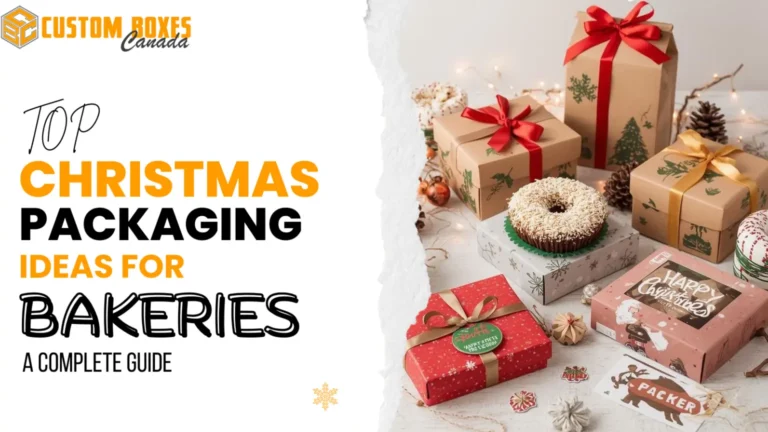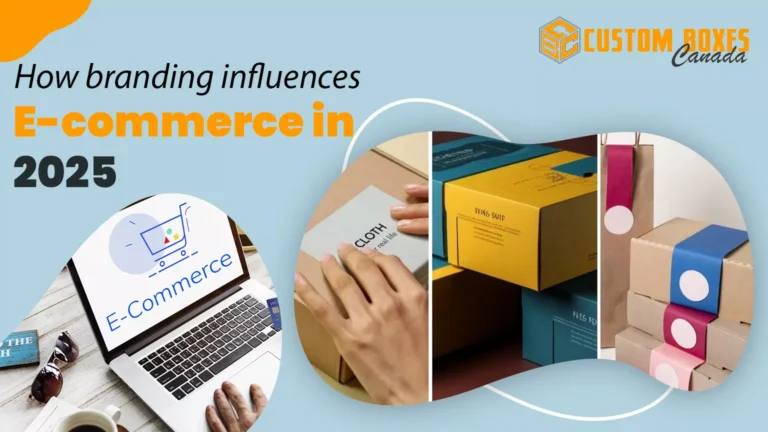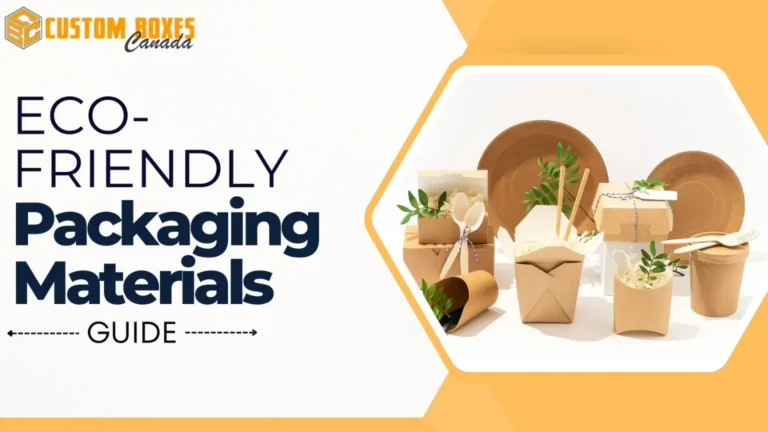Every year, the world produces more than 300 million tonnes of plastic waste, but only about 9% gets recycled.¹ The rest ends up in landfills, oceans, and natural environments, causing irreversible damage.
In Canada, consumers are becoming more eco-conscious than ever—66% of global shoppers now prefer brands that use sustainable packaging. This means choosing the right packaging materials isn’t just good for the planet, it’s also good for business.
This guide will walk you through the best eco-friendly packaging materials, their benefits, cost, and how your business can make the switch with the help of Custom Boxes Canada.
Why Eco-Friendly Packaging?
Environmental Benefits
-
Reduces carbon footprint and greenhouse gas emissions
-
Keeps plastics out of oceans (8 million tonnes enter oceans annually³)
-
Protects wildlife and ecosystems
-
Breaks down naturally without leaving harmful residues
Business Benefits
-
Improves your brand’s green reputation
-
Attracts eco-conscious customers (a major buying factor for Gen Z & Millennials)
-
Complies with Canada’s single-use plastics ban
-
Builds long-term trust and loyalty
Example: Switching to Kraft bakery boxes instead of plastic clamshells not only reduces waste but also enhances your brand image. See our Custom Bakery Boxes.
Types of Eco-Friendly Packaging Materials
Here are the top sustainable materials you should know:
Kraft Paper & Cardboard
-
Pros: 100% recyclable, durable, customizable
-
Best For: Bakery boxes, food packaging, retail boxes
Corrugated Cardboard
-
Pros: Lightweight, strong, eco-friendly shipping option
-
Best For: Mailer boxes, e-commerce packaging
Compostable Plastics (PLA, PHA, Cornstarch-based)
-
Pros: Made from renewable resources, biodegradable
-
Best For: Cups, trays, wraps in the food industry
Plant-Based Packaging (Bagasse, Bamboo, Palm Leaves)
-
Pros: Food-safe, grease-resistant, heat-tolerant
-
Best For: Takeaway containers, eco-friendly food trays
Mushroom Packaging
-
Pros: Made from mycelium and agricultural waste, fully biodegradable
-
Best For: Shipping fragile items safely
Recycled Materials (Cardboard, Paperboard, Glass, Aluminum)
-
Pros: Reduces landfill waste, glass & aluminum are infinitely recyclable
-
Best For: Retail packaging, beverages, cosmetics
Biodegradable Films & Wraps
-
Pros: Compostable alternatives to cling wrap & plastic films
-
Best For: Food wraps, retail protective packaging
4. Recyclable vs Compostable vs Biodegradable
| Type | Breakdown Process | Disposal Method | Best For |
|---|---|---|---|
| Recyclable | Reprocessed into new products | Recycling bins | Cardboard, glass, aluminum |
| Compostable | Turns into organic matter | Compost bins (home/industrial) | Food containers, cups |
| Biodegradable | Breaks down naturally (time varies) | Landfill/compost | Wraps, trays, bags |
Many businesses often confuse the terms “biodegradable” and “compostable.” Compostables require specific conditions to degrade, while biodegradables may still leave residues.
Best Eco-Friendly Packaging by Industry
Food & Bakery
-
Kraft paper boxes, compostable wraps, sugarcane bagasse trays
Retail & E-Commerce
-
Corrugated mailers, recycled cardboard boxes, compostable mailers
Restaurants & Takeaway
-
Plant-based containers, compostable plastic cutlery, and kraft food wraps
Fragile Item Shipping
-
Mushroom packaging, corrugated inserts, recyclable fillers
Cost: Myth vs Reality
A common misconception is that eco-friendly packaging is too expensive. In reality:
-
Upfront costs may be higher, but:
-
Saves money long-term by avoiding penalties & improving efficiency
-
Boosts brand loyalty (eco-conscious consumers are willing to pay 10-20% more)
-
-
Affordable options for startups: Kraft, recycled cardboard
-
Premium options for luxury brands: eco-friendly gift boxes
Eco-Friendly Packaging in Canada
-
Canada banned several single-use plastics in 2022, with more restrictions coming in 2025.
-
Businesses adopting eco packaging early gain a competitive edge.
-
At Custom Boxes Canada, we provide eco-friendly stock options with:
-
Free shipping across Canada
-
Custom printing with eco inks
-
Fast turnaround
-
How to Switch to Eco-Friendly Packaging (Step-by-Step)
-
Audit your current packaging
-
Choose alternatives (kraft, compostables, recycled)
-
Work with a local supplier like us
-
Educate staff & customers on recycling/composting
-
Promote eco-friendliness as part of your brand identity
Future Trends in Sustainable Packaging (2025 & Beyond)
-
Edible packaging made from seaweed & starch
-
Smart packaging with QR codes for disposal instructions
-
Reusable loops & zero-waste shipping
-
Compostable plastics are becoming mainstream in Canada
Conclusion
Eco-friendly packaging is no longer optional—it’s a business necessity. It protects the planet, aligns with Canadian regulations, and builds stronger customer loyalty.
Whether you’re in food, retail, or e-commerce, Custom Boxes Canada can help you find the perfect sustainable packaging.
Get a free quote today
FAQs
1. What are eco-friendly packaging materials?
Materials like kraft, corrugated cardboard, compostable plastics, bagasse, mushroom packaging, and recycled paper.
2. Is eco-friendly packaging expensive?
Not always. Kraft & recycled cardboard are affordable, while compostables are becoming cost-competitive.
3. Which packaging is best for food products?
Kraft bakery boxes, compostable wraps, sugarcane trays, and bamboo containers.
4. Can eco-friendly packaging be branded with logos?
Yes! Custom Boxes Canada offers custom printing on eco stocks.
5. What’s the difference between recyclable & compostable packaging?
Recyclables are reprocessed into new products; compostables break down into organic soil.
7. Is paper packaging better than plastic?
Yes, when responsibly sourced and disposed of, paper/kraft is far greener than single-use plastics.
8. What is mushroom packaging?
A biodegradable alternative to styrofoam, made from fungal mycelium, perfect for fragile shipping.









